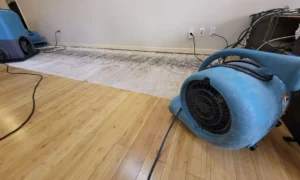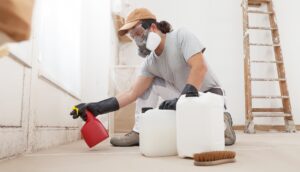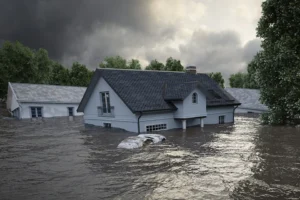When unexpected property damage strikes, the minutes and hours immediately following are crucial. Understanding what to do in these first moments can significantly mitigate further damage, making the recovery process smoother and potentially less costly. We know how overwhelming it can feel when you’re facing the chaos of a damaged home or business. That’s why we’re here to guide you through those first critical steps that you should take to secure your property effectively until our professional restoration team arrives.
Our experience in property damage restoration has shown that quick thinking and prompt action can make all the difference. We equip you with knowledge not just to respond to an emergency but to do so with confidence and efficiency. This guide will walk you through initial actions to control the situation, safety measures to protect yourself and others, and tips on how to communicate effectively with restoration professionals. By following these strategies, you’ll be well-prepared to protect your property from further damage and set the stage for a successful restoration.
Quick Actions to Take Immediately After Property Damage
The immediate aftermath of property damage can be chaotic and confusing. That’s why our first advice is to stay calm and focus on what can be controlled. Quickly assessing the extent of the damage is your starting point. If it’s safe to do so, shut off water mains or gas lines to prevent further damage or risk. Next, document everything. Use your phone or a camera to take pictures of the damage for insurance claims and restoration assessments. This visual evidence is critical and will support your claim process as well as our restoration planning.
Before you begin cleanup, ensure it’s safe to enter your property. Check for structural damage like sagging roofs or floors, cracked foundations, and broken supports. If electricity is still on and has not been affected by water or physical damage, turn off power at the main breaker to prevent electrical hazards. These actions not only protect your property but also keep you and others safe during the initial response phase.
How to Secure Your Property Safely and Effectively
After taking immediate actions, securing your property is the next critical step. Start by covering broken windows and damaged roofs with plywood or heavy-duty plastic sheeting. This helps prevent elements like rain or wind from causing further damage and secures your property from unexpected intruders. If doors have been damaged, secure these areas similarly. For properties that will remain unattended, consider additional security measures like padlocks or security systems that alert you to any unauthorized access.
We suggest isolating the affected area from the rest of the property to contain any potential contaminants or hazards, especially in cases of water or fire damage. Employ sandbags if there is ongoing risk of water ingress from floods or leaks. This not only strengthens your property’s defenses but also minimizes the area that needs intensive restoration work, which can speed the recovery phase and potentially reduce restoration costs. By following these strategies, you are actively taking part in safeguarding your property and preparing it for the restoration process, enabling us to address the damage more efficiently when we arrive.
Essential Supplies to Have on Hand for Emergency Repairs
Being prepared with the right supplies can make a significant difference in protecting your property until help arrives. We recommend keeping an emergency repair kit that includes several essential items. First, stock up on heavy-duty plastic sheeting and duct tape. These materials are invaluable for creating temporary seals around broken windows or leaks in your roof. Also, include sandbags in your kit to help control potential water ingress from flooding.
Moreover, it’s wise to have a set of basic hand tools, such as hammers, nails, and screwdrivers, readily available. These can be crucial for quickly reinforcing weakened structures or securing tarps, especially if the damage has compromised the security of your property. In addition, sturdy work gloves and protective eyewear should also be part of your emergency supplies—not only for your safety but also to enable you to handle rough or potentially hazardous materials without waiting for professional help.
Communicating Effectively with Restoration Professionals
Once our team arrives, effective communication is key to efficiently coordinating the restoration of your property. Be prepared to describe the extent of the damage clearly, and share all relevant information regarding the condition of the building. It’s helpful to have a list of affected areas and any actions you’ve already taken. This allows us to prioritize our tasks and start the restoration process immediately.
Furthermore, don’t hesitate to ask questions and express any concerns you may have. We value clarity and transparency; understanding every step of the restoration process can provide you with peace of mind during what is often a stressful time. Detailed communication not only helps in setting realistic expectations but also enables us to tailor our approach to suit your specific needs, ensuring that the restoration work aligns perfectly with your requirements.
Conclusion
Navigating through the aftermath of property damage is undoubtedly challenging, but taking the right measures can greatly influence the recovery process. By understanding the quick actions to take immediately after damage occurs, securing your property effectively, having essential supplies on hand, and communicating efficiently with restoration professionals, you place yourself in a better position to minimize damage and accelerate recovery.
If you encounter any form of property damage, remember that our team at Northwest Restoration is here to support you every step of the way. Contact us for expert guidance and professional property damage restoration services that restore not just your property, but also your peace of mind. Let us help you rebuild and recover, ensuring your property is returned to its pre-damaged state swiftly and efficiently.









